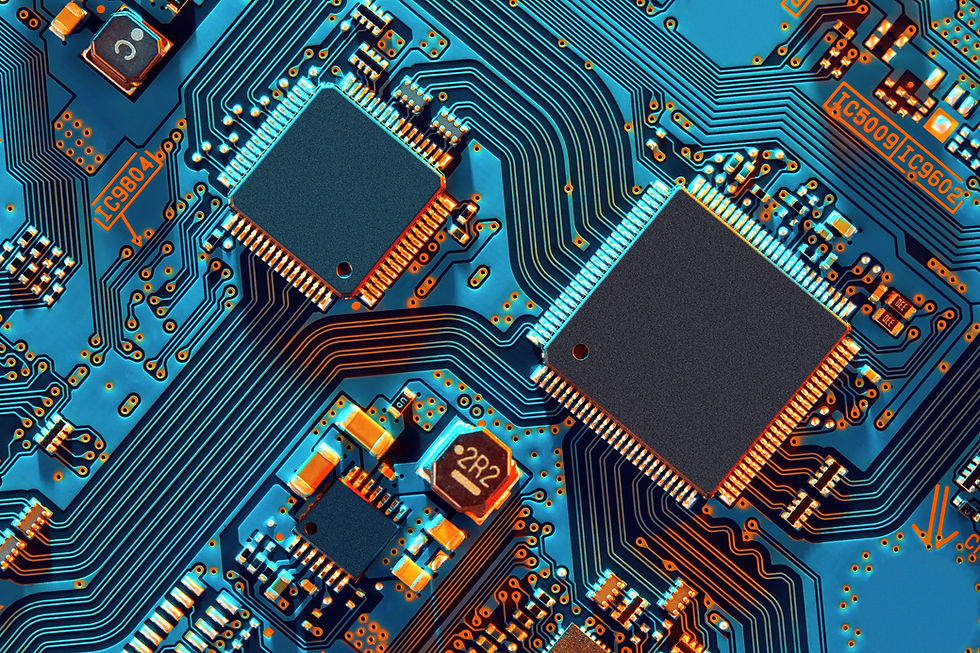There are tons of applications for the Internet of Things (IoT) devices, from home automation to connected cars. According to industry predictions, Internet of Things semiconductors will grow at a significantly faster rate than the semiconductor industry.
What is IoT?

IoT is a network of physical devices, vehicles, buildings, and other items that are embedded with electronics, software, and sensors. With the growth of the IoT, semiconductors that enable these devices will become more in demand.
What is a semiconductor and where is it used?

Semiconductors are the building blocks of modern electronics. Semiconductors are made of materials that can carry electricity and heat - such as carbon, silicon, germanium, and silicon-germanium. The transistor, created in 1947, was the first semiconductor. In 1958, the integrated circuit (IC) was introduced to replace the transistor. An integrated circuit (IC) is a circuit that has all of its components interconnected on a single chip. Since the early days of the transistor and integrated circuit, the semiconductor industry has grown exponentially. The sector is currently worth over $400 billion a year and employs over one million people worldwide.
Why is the demand increasing for IoT semiconductors?
Semiconductors power everything from smart home appliances to self-driving cars. Semiconductor chips power a large part of the electronic equipment on which we rely. The growing popularity of the Internet of Things (IoT) is driving up demand for semiconductor chips. We should expect to see more new devices and applications emerge as the IoT semiconductor market matures. This is an exciting time for the semiconductor business, and we can't wait to see what happens next.
IoT in Vehicles: An Example of How Semiconductor Changes Our Lives
Autonomous vehicles are capable of detecting, evaluating, deciding, responding, and communicating with other vehicles, networks, and people. The rise of IoT and big data applications has aided the growth of automotive IoT, which can dramatically transform the way we use automobiles. Automotive semiconductor revenue increased from $10 billion to $30 billion between 2001 and 2015. This is due to an increase in electronic content in cars and the expansion of electronic features in the most recent models. IoT sensors allow the self-driving car to navigate a congested roadway, and provide an alert to your phone for planned maintenance, etc. The benefits include a higher quality of life with more time to spend on productivity or with family members when moving; fewer breakdowns, less human error, and safer roads with fewer accidents.
The future of the IoT semiconductor
Today's smartphones outperform the most advanced computers of the 1960s in terms of power, speed, and capability. It is not an overstatement to say that the semiconductor sector enables modern existence. Smartphones, televisions, computers, medical equipment, military gadgets, transportation, and thousands of other things could not function sans semiconductor chips.
As demand grows, the industry is concerned about the availability of viable, cost-effective organic and compound semiconductors.
Moore’s law in the semiconductor industry
A huge problem now facing chip manufacturing is what industry insiders call Moore's Law. Per Moore's Law, the number of transistors on a semiconductor chip doubles every 18 months, while the cost of the device is halved. Today, smaller, tightly packed transistors enable compact, more powerful gadgets. Physical limits to semiconductor materials will eventually be reached, making it impossible to continue manufacturing transistors indefinitely. Consequently, the prospects for AI and large-scale computing will have serious consequences.
Several experts advocate for the expansion of silicon technologies that don't follow Moore's Law. Organic and compound semiconductors, for example, could fix to address the increasing needs of modern electronics. In the future, compound materials may be used to make semiconductors that are better than silicon.
Quantum computing offers another way to solve the problem. A quantum computer uses quantum bits, as opposed to the binary system used by current computers. Quantum computing is largely a still-theoretical field, but if it becomes reality, it could be millions of times more powerful than today's processors.
How will the IoT impact semiconductor technology in the future?
Insatiable Demand
The Internet of Things is an insatiable consumer of semiconductors. By 2030, a great number of semiconductors would be required for the operation of 125 billion devices. Lack of resources, paired with growing demand, may raise raw material prices and supply chain costs.
Need for high-quality, tailored semiconductors
Many smart-city semiconductors will be in difficult-to-reach locations, so the less maintenance and upgrades they require, the better. Such systems will require the development of high-quality, tailored semiconductors, providing the semiconductor industry with a new business model.
What if semiconductor performance did not evolve in tandem with new technology?
If semiconductor performance does not keep up with new technologies, chip speed and affordability will drop over time. As a result, global technological progress would slow, limiting the potential given by AI, high-performance computers, and the Internet of Things.
Conclusion
A growing number of enterprises will migrate to IoT-ready products and solutions. New IoT device applications will make our lives easier, safer, and more efficient in a variety of industries.
A semiconductor is found in a wide range of electrical equipment and is a critical component in the Internet of Things. In the following years, the IoT semiconductor market is predicted to expand substantially. Organic and compound semiconductors are a potential solution for meeting the industry's growing demand for smaller, more powerful devices.



Comments